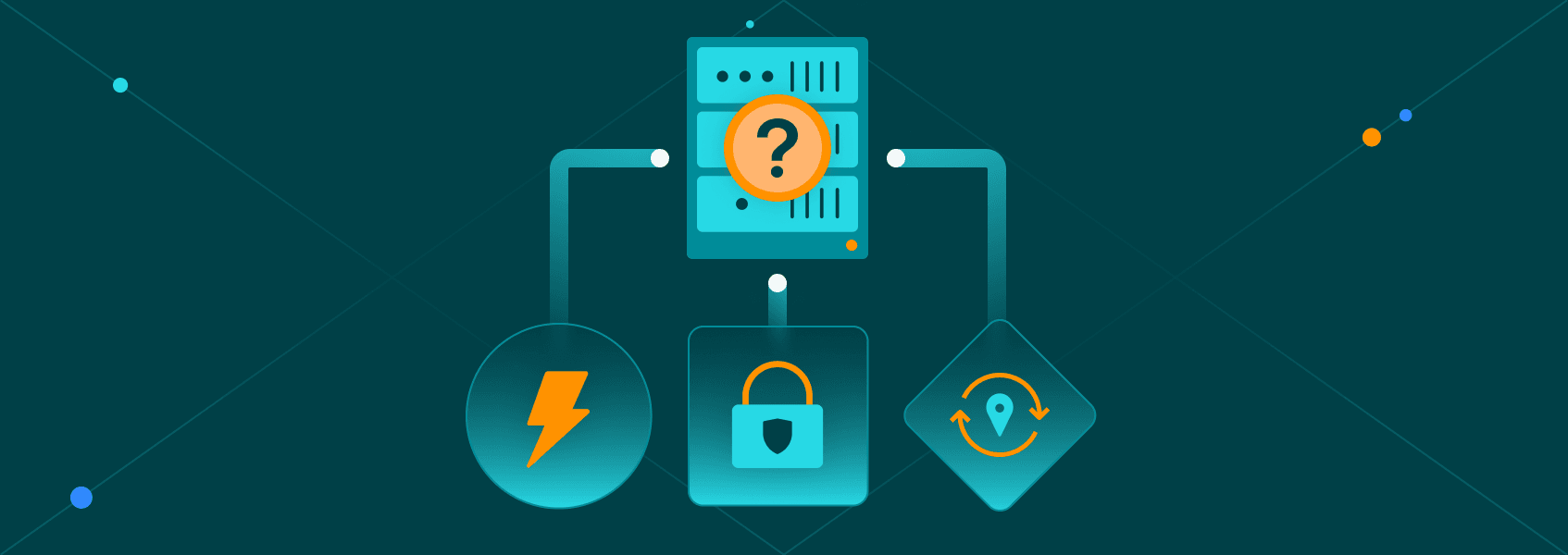IPv4 vs. IPv6: What is the Difference?


Justas Palekas
In This Article
Internet Protocol (IP) address is a numeric label assigned to every device connected to a computer network or the internet. The devices use the IP to communicate with each other. Like a phone number within a telephone network, the IP is a sequence of numbers that’s unique for each device on the network. The IP address serves two main purposes. First, it identifies devices and users on a network. Second, IP addresses permit computers to communicate (send and receive data) over the internet. The IP stipulates the packet scheme and the technical format of addressing data on the networks. When combines with a Transmission Control Protocol (TCP) , the IP allows for the creation of a virtual connection between devices in a network.
A Brief Guide to IPv4 and IPv6
Currently, there are two types of IP addresses - IPv4 and IPv6. Though they may serve the same purpose, they are quite different from each other. Let’s take a closer look at the differences between these two types of IP addresses.
What is IPv4
The first version of IP is IPv4. Developed at the start of the 1980s, IPv4 was first deployed by ARPANET in 1983. It’s the most widely used Internet Protocol (IP) version today, carrying well over two-thirds of internet traffic. An IPv4 address features a dot-decimal notation. It employs a 32-bit address scheme, with each of the four sections representing a group of eight bits. Although this address scheme allows for creating 232 unique addresses (over 4 billion distinct addresses), there is a limit to the overall number of IPv4 addresses available. Initially, this number of addresses was believed to be inexhaustible, but the situation today is different. The final blocks of IPv4 addresses were issued by the Internet Assigned Numbers Authority (IANA) in 2011, and by 2015 the US had officially run out of IPv4 addresses. Though address exhaustion is a big issue, IPv4 still forms the internet’s backbone, with over 90% of web traffic using this protocol. Solutions such as reusing IP addresses, and Network Address Translation (NAT), where one unique IP address represents a group of devices, are currently being used. Still, the only true long-term solution is moving on to IPv6 addresses.
What is IPv6
IPv6 is the latest version of the Internet Protocol (IP) developed in the late 1990s to address the need for more IP addresses and eventually replace IPv4. IPv6 addresses are depicted in hexadecimal numbers divided by colons. IPv6 uses a 128-bit address scheme, consisting of eight 16-bit blocks. The IPv6 address scheme allows for the possible creation of approximately 3.4×1038 addresses. Though this is a massive number of addresses, it’s still finite and will run out someday, but they will keep us going for a long time to come. 
Difference between IPv4 and IPv6
Though both IPv4 and IPv6 are internet communication protocols, there are noticeable differences between them: - IPv4 uses a 32-Bit IP address scheme, while IPv6 employs a 128-Bit IP address scheme.
- IPv4 uses a dot-decimal numeric address, IPv6 employs a hexadecimal alphanumeric address.
- The binary bits for IPv4 are separated by a dot (.) while those of IPv6 are separated by a colon (:).
- The smallest packet size for IPv4 is 576 bytes, whereas for IPv6 it’s 1208 bytes.
- IPv4 supports broadcast, and IPv6 doesn’t.
- For header fields, IPv4 has 12 header fields while IPv6 has 8.
- For IPv4, configuration is mandatory. All newly installed systems must be configured for them to connect to other systems. For IPv6, configuration is optional. This allows you to configure your system depending on function.
- IPv4 has checksum fields while IPv6 does not.
- To map to a MAC address, IPv4 uses Address Resolution Protocol (ARP), while IPv6 uses Neighbor Discovery Protocol (NDP).
- Because IPv4 uses the dot-decimal notation, it is not suitable for mobile networks. The hexadecimal notation of IPv6 makes it the ideal choice for mobile devices.
These are just some of the differences that you’ll find between IPv4 and IPv6, so the question then becomes - which one is a better choice for you?
IPv4 vs. IPv6: Which to Use?
Let’s start by stating that IPv4 and IPv6 cannot communicate with each other. Secondly, its abundantly clear that IPv4 addresses will soon be exhausted, and IPv6 is the future. With better speed, greater security, and an almost infinite pool of unique IP addresses, transitioning to IPv6 seems like the obvious choice. So why do we still use IPv4? The most significant issue is that though IPv4 and IPv6 can exist and function together over the same network in an arrangement called a dual-stack, they cannot communicate with each other. Why not simply switch over? As stated above, over 90% of internet traffic uses the IPv4 protocol. A sudden switch would leave users unable to access most applications and websites. While IPv6 is the future, the transition from IPv4 should be done slowly with dual stacking assisting in enabling the shift from the old IP type to the new one. As IPv4 and IPv6 devices cannot communicate, Dual stacking allows users to seamlessly access web sites or web content that may be on either IPv4 or IPv6 servers.
What You Need to Start Using IPv6?
- An operating system compatible with IPv6. The latest versions of Windows, Linux, and Mac OS X are IPv6 compatible.
- Presently, most routers in the market do not support IPv6, but some do, so check your router’s specification details.
- The last barrier to cross in this transition is Internet Service Providers (ISPs). You may have the right OS and router, but you cannot move forward if your ISP does not support IPv6.

Final Thoughts
IPv6 is the future of the internet. The transition, however, isn’t straightforward and will take some time. In the meantime, it’s better if you can find a way to take advantage of the situation today. If you’re in need of the very best IPv4 or IPv6 proxies , we at IPRoyal are here to meet that need. Stay ahead of the competition during this transition by using our residential proxies , sneaker, private, or 4G IPv4 and IPv6 proxies. Contact us today and learn how you can leverage this transition and get the better of your competition!

Author
Justas Palekas
Head of Product
Since day one, Justas has been essential in defining the way IPRoyal presents itself to the world. His experience in the proxy and marketing industry enabled IPRoyal to stay at the forefront of innovation, actively shaping the proxy business landscape. Justas focuses on developing and fine-tuning marketing strategies, attending industry-related events, and studying user behavior to ensure the best experience for IPRoyal clients worldwide. Outside of work, you’ll find him exploring the complexities of human behavior or delving into the startup ecosystem.
Learn More About Justas Palekas


